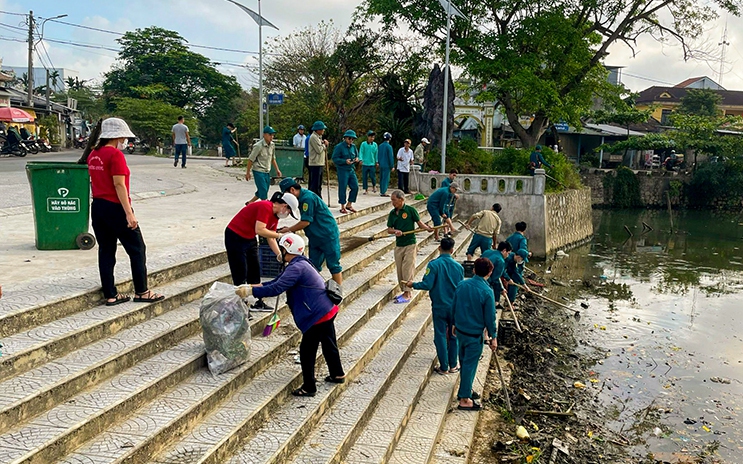Chairman of the Hanoi People's Committee Tran Sy Thanh signed and issued Plan No. 359/KH-UBND dated December 10, 2024, detailing the implementation of the city's "Bright - Green - Clean - Beautiful" emulation movement.
The "Bright - Green - Clean - Beautiful" emulation movement aims to drive comprehensive and transformative changes in environmental protection.

This plan includes managing waste and wastewater, improving air quality, and creating a sustainable, clean living environment that enhances the city's appearance. It seeks to mobilize the entire political system and community to actively participate, with strong commitments from all levels, sectors, organizations, and citizens to implement measures for environmental protection.
The city aims to create a widespread, coordinated movement that raises awareness, encourages responsible environmental behavior, and fosters a cultural habit of environmental stewardship for sustainable development and public health.
Implementation Content:
Launch and organize the emulation movement to develop "Bright - Green - Clean - Beautiful" urban areas and residential zones across districts, towns, and municipalities. Effectively implement projects, plans, programs, and tasks to manage and control environmental quality, build urban landscapes, and create eco-friendly green spaces. Recognize and reward organizations and individuals with outstanding achievements in the movement to build a "Bright - Green - Clean - Beautiful" city.
Target Groups:
City departments, agencies, and political-social organizations. People's Committees of districts, towns, and municipalities. Local communities, agencies, and organizations.
Key Solutions:
Conduct widespread, continuous activities such as the "Green Weekend" program, "Waste Sorting at Source" models, and campaigns like "Reviving Hanoi's Lakes," "Litter-Free Lakeshores," and "Festival Around the Lake." Reclaim public spaces near rivers and lakes and promote actions for clean air and green cities. Implement supportive policies for residents, such as subsidies for installing drainage systems in underserved areas and incentives for wastewater treatment at the source. Engage citizens in monitoring activities by utilizing digital technologies, developing apps or portals for reporting illegal waste disposal, clogged drains, or surface water pollution. Introduce reward mechanisms for valuable information about environmental violations.
The Hanoi People's Committee has assigned the Department of Natural Resources and Environment to guide, inspect, and supervise the implementation of the plan in localities. Tasks include evaluating district and municipality plans, monitoring environmental sanitation along city-managed roads, ensuring the consistent operation of waste treatment facilities at Nam Son and Xuan Son, and promoting advanced waste treatment technologies. Public information campaigns will also be conducted to raise awareness about the "Bright - Green - Clean - Beautiful" movement.
The movement will be carried out consistently and effectively, harnessing creativity and mobilizing all resources from the political system and society. Activities will be practical, with broad participation from citizens, social organizations, and associations, fostering a culture of environmental responsibility. Reward mechanisms will ensure transparency and timeliness, while departments, agencies, and local committees that fail to meet deadlines or implement the plan effectively will be held accountable to the Chairman of the People's Committee.
The targets include ensuring all districts, towns, and residential areas organize self-managed environmental initiatives. Additionally, 100% of districts, towns, municipal departments, and agencies must develop detailed plans for waste sorting at the source, along with systems for the collection, transportation, and treatment of solid waste. At least 50% of urban domestic wastewater must be treated before being discharged into the environment.
Efforts aim for 75% to 80% of days annually to have air quality index (VN_AQI) levels rated as good or moderate. By 2030, the average annual PM2.5 concentration at most monitoring stations in urban areas is to be controlled below 40 µg/m³, and below 35 µg/m³ in suburban areas.
Furthermore, all construction sites must implement dust reduction measures, while emissions from industrial plants are required to meet national technical standards (QCVN). Household use of coal briquettes or low-grade fuels must be eliminated entirely, alongside the cessation of open burning of straw, agricultural residues, and a significant reduction in ritual paper burning.